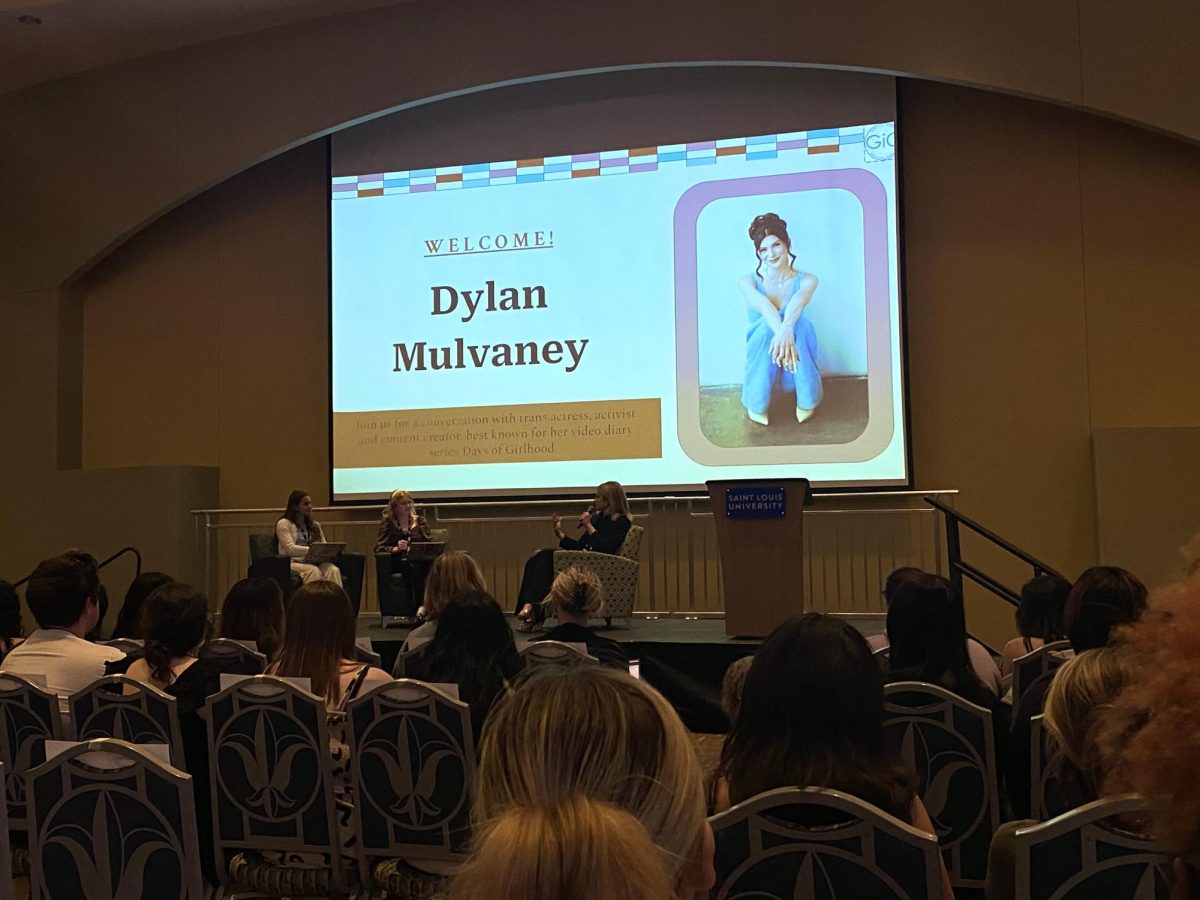Jennifer Nicols Curtis spoke to the students of Saint Louis University Monday, April 22, about AIDS at 7 p.m. in Cook Hall. The speech, sponsored by the Great Issues Committee and the Residence Hall Association, was titled “Beyond AIDS: A Talk about love, life and AIDS in the 21st century.”
Curtis became an AIDS lecturer in 1987 when her younger brother, Henry, a hemopheliac, was diagnosed with HIV.
Curtis’s family later figured that Henry was probably infected with AIDS from blood transfusions in 1982 or 1983.
They found out that Henry had HIV in 1985. Henry was 12. “All we knew in 1985 was that people who got HIV got AIDS. And people with AIDS died,” Curtis said.
During the time of hysteria in 1985 when Ryan White, a teenager infected with HIV, was not allowed to attend his school, the family decided to keep Henry’s HIV a secret-even from close friends and family.
In November of 1991, Henry’s senior year of high school, he was diagnosed with AIDS.
He would most likely live little more than one or two years-long enough to finish high school but not college.
Henry decided the secret was over. In an Eagle Scout program, he gave speeches to the community about AIDS and began a lecture tour.
Henry became the first student in a public school to willingly come out with AIDS.
Before the family knew it, Henry was on the cover of Parade magazine, on HBO and testifying before Congress.
By 1996, five years after he was diagnosed with less than two years to live, Henry was sick and “retired.”
Two years ago, Henry died. But his crusade did not.
Curtis continued her brother’s crusade by touring and speaking about AIDS. “AIDS started out as an accident, but has become what’s important to our family today,” Curtis said.
Curtis now gives speeches to college crowds that “have never known a world without AIDS.” She said that people’s attitudes toward the disease are changing.
“AIDS is becoming more of a chronic disease, not a terminal disease like when my brother was infected,” she said.
But when people ask Curtis how long until a cure is found, she tells them not to hold their breath.
Curtis points out that now, while people are living longer with AIDS, scientists are further from finding a cure. Currently, we have drugs that kill only most of the disease. “By treating people now, which we have to do of course, we’re creating a super-strain of the virus that drugs may not work on,” she said. “I don’t know what we’re going to do about that.”
Curtis also points out that by searching for a cure for AIDS, scientists are faced with ethical problems. For example, the testing of new drugs involves giving medicine to half of a test group and a placebo to the other half. Also, many tests are conducted in Africa where almost one-fourth of the adult population of some nations is infected with AIDS.
There are other elements to the AIDS epidemic that “frustrate” Curtis.
For example, while the education for AIDS and HIV has increased, the number of new people infected every year remains at a steady 40,000 for the past 10 years.
“What used to be the disease of gay, white men is now spread the most rapidly through minorities, Hispanics and Blacks,” Curtis said. “What we’ve done is driven the disease to the people who have the least opportunity to get information.”
Another frustration is that AIDS statistics are out of date. “We know who has AIDS, but we don’t know who has HIV,” she said. “So AIDS figures are about 10 years old. We figure that people develop AIDS 10 years after being infected.”
Curtis also pointed out that people generally focus on AIDS education instead of other sexually transmitted illnesses (STI).
However, someone infected with another STI, like gonorrhea, is more likely to contract HIV when exposed since his or her immune system is already weakened, according to Curtis.
“Almost every person in the U.S. with AIDS, has herpes, the most common STI,” she said.
Curtis played “Sexual Jeopardy” to help educate her audience about STIs. “It’s not a funny thing, but sometimes you have to laugh so you don’t cry,” she said.
One point revealed during the game startled a few audience members: St. Louis is one of the Center for Disease Control’s top 20 highest-rated cities for incidences of gonorrhea and syphilis.
Kansas City, Mo., was also noted for being in the top 20 for gonorrhea.
Curtis ended her speech by acknowledging that there are some solutions to the spreading of AIDS. “But we need to decided if it’s worth it and work at it,” she said. If America gives up, then my brother died for nothing.”






